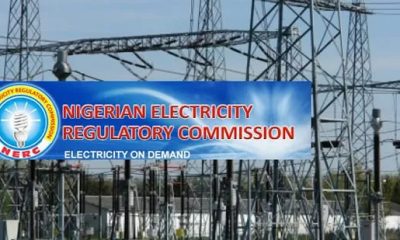News
Q1 2023: Nigerians Paid N247bn For Electricity – NERC

The Nigerian Electricity Commission, (NERC) has said that electricity consumers in Nigeria paid N247.09 billion for electricity in the first quarter of 2023.
This was contained in its 2023 first quarter report seen by New Telegraph on Thursday.
According to the data, the N247.09 billion paid in the first quarter is an increase of 1.14 per cent compared to the N243.65 billion electricity consumers in Nigeria paid in the fourth quarter of 2022.
NERC also stated that the total revenue collected by all the electricity distribution companies (DisCos) represented a collection efficiency of 68.75 per cent.
According to it, DisCos cumulative collection efficiency reduced by 4.58 pp from 73.33 per cent in 2022/Q4 to 68.75 per cent in 2023/Q1.
It also said that the total energy bill increased by 8.15 per cent (compared to N332.28 billion in 2022/Q4).
It said, “The 2022/Q4 to 2023/Q1 decline in collection efficiency was largely driven by Ibadan, Yola, Kaduna, and Abuja, whose collection efficiencies decreased by 15.50 pp, 10.20 pp, 8.49 pp and 5.29 pp respectively. Conversely, only Jos DisCo recorded an improved collection efficiency of 4.48 pp.
“In 2023/Q1, the average hourly generation on the grid was 4,334.41 MWh/h, which indicated an increase of 92.05 MWh/h (2.16 per cent) compared to 4,242.36 MWh/h in 2022/Q4.
“The overall increase in average hourly generation within the quarter was due to an increase in the available capacity of Egbin, Afam VI, Geregu, and Sapele power plants. The biggest improvement noticed in Egbin’s hourly output is virtually proportional to the improvement in its availability. This is to be expected because Egbin plays a critical role in meeting demand in the Lagos region, which regularly accounts for 25–30 per cent of national consumption”.
“The twenty-six (26) generation stations that injected energy into the national grid in the quarter under review included eighteen (18) gas, four (4) hydro, two (2) steam, and two (2) gas/steam-powered plants.”
It added, “In 2023/Q1, the average hourly generation of all available units increased by 92.05 MWh/h (2.17%) from 4,242.36 MWh/h in 2022/Q4 to 4,334.41 MWh/h. However, the Plant Load Factor across the generation plants decreased by 9.04 pp from 95.43% in 2022/Q4 to 86.39% (2023/Q1. The decline in load factor is a result of the marginally lower increase in average hourly generation when compared to the increase in average available capacity recorded in 2023/Q1 relative to 2022/Q4.
“The total quarterly generation in 2023/Q1 was 9,350.24 GWh. This represents a decrease of -15.41 GWh (-0.16%) from 9,365.65 GWh generated in 2022/Q4.
“Grid Performance: In 2023/Q1, the averages of daily maximum and minimum system frequencies were 50.86 Hz and 49.08 Hz, respectively.” Similar to the averages recorded in 2022/Q41, both frequencies are outside the higher and lower bounds of the normal operational limit (50 Hz0.25 Hz) approved in the grid code. The averages of daily maximum and minimum system voltages in 2023/Q1 were 352.96 kV and 299.97 kV, respectively. Both were also outside the limits set in the grid code (330 kV, 16.5 kV).”
-

 News4 days ago
News4 days agoOsun 2026: Action Alliance Elects Farinloye As Governorship Candidate, Pledges People-Centred Governance
-

 News4 days ago
News4 days agoFRSC To Prosecute Peller After Crash
-

 News4 days ago
News4 days agoOsinbajo, Adeleke, Aregbesola Inaugurate N34bn UNIOSUN Medical Research And Training Hospital
-

 News4 days ago
News4 days agoMuftwang Sets To Defect To APC














